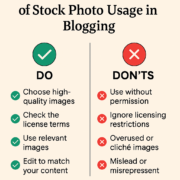How To Build a Knowledge Management Strategy?
In this era of information overload, companies face the challenge of harnessing their collective knowledge effectively. A robust knowledge management strategy can enhance decision-making capabilities, facilitate access to information, and encourage a culture of knowledge sharing. Establishing this strategy requires thoughtful planning and alignment with business objectives. Keep reading to discover key steps for crafting a knowledge management strategy that powers growth and innovation in your organization.
Defining the Core Objectives of Knowledge Management

To launch a successful knowledge management initiative, the first step is to clearly define your core objectives. These goals will direct all ensuing actions and ensure that efforts are aligned with broader organizational strategy. Objectives may include streamlining knowledge-sharing processes, improving customer support, or retaining institutional knowledge amidst staff turnover.
Once objectives are set, identify the stakeholders who will be most impacted by the knowledge management system. Engaging these parties at the outset fosters a sense of ownership and helps tailor the system to actual user needs. Involvement from different levels within the organization ensures a more holistic approach to establishing your strategy.
An effective plan should also consider the challenges that might impede knowledge sharing. These can range from cultural resistance to inadequate technology infrastructure. Understanding these barriers early on allows the development of targeted interventions to overcome them and ensures smoother implementation of the knowledge management plan.
Finally, prioritize your objectives. Not all goals can be achieved at once, and setting priorities helps allocate resources effectively. This step is crucial in building a phased approach to your knowledge management initiative, enabling you to focus on the most critical areas first and expand the system as necessary.
Understanding and Assessing Your Current Knowledge Assets
Before you can manage knowledge, you need to know what you have. Conducting an audit of your current knowledge assets helps identify what information is available, where it resides, and how it is currently being utilized. This involves reviewing documents, databases, and other sources of organizational knowledge.
Assessment also includes understanding the flow of knowledge within the company. Trace how information moves from one department to another, and pinpoint bottlenecks or gaps in knowledge transfer. Clear mapping of this flow is essential for creating a knowledge management system that efficiently connects people with the information they need.
Equally important is recognizing the tacit knowledge held by employees—the valuable insights and experiences that may not be documented but are critical for successful operations. Figuring out ways to capture and share this tacit knowledge is a significant objective of any knowledge management plan.
This assessment phase will often reveal a mix of strengths to build upon and weaknesses to address. It is a foundation for ensuring that the future knowledge management system is not created in a vacuum but is based on an accurate understanding of the company’s starting point.
Establishing a Knowledge Management Framework

With objectives set and current knowledge assets assessed, the next step is developing a framework that supports these elements. A solid framework provides the structure within which all knowledge management activities will occur. Consider the creation of a central repository where knowledge can be stored, accessed, and updated.
To ensure the framework is functional and user-friendly, design a taxonomy that makes sense for your organization. This involves categorizing information in a way that aligns with how employees seek and process knowledge. A logical, intuitive classification system helps users find information quickly, thereby increasing their likelihood of using the system.
Another key aspect is setting up governance for managing the knowledge repository. This includes defining roles and responsibilities within the organization for updating the system and establishing policies for how knowledge is captured, maintained, and shared. Governance ensures the continued relevance and accuracy of the information stored.
Finally, consider the cultural shifts that need to accompany the establishment of the framework. Encouraging a culture that values knowledge-sharing and learning calls for adjusting incentives, training, and perhaps even organizational structures. It’s not enough to have the infrastructure; the workforce must be ready and willing to use it effectively.
Overall, crafting a knowledge management strategy is a dynamic process that must be carefully tailored to an organization’s unique needs and continuously refined. With clear objectives, an understanding of current assets, an effective framework, the right technology, and ongoing evaluation, companies can transform their knowledge into a powerful asset that drives innovation and competitive advantage.




